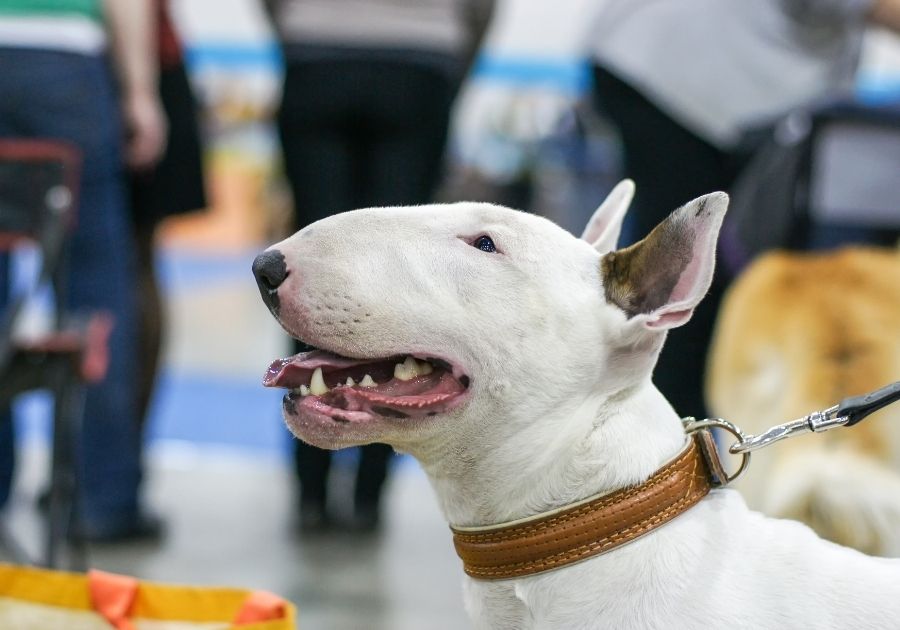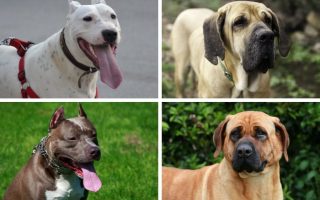For centuries, people who lived in the Pyrenees Mountains, on the French-Spanish border, relied on their dogs for help in everyday chores.
Dogs were a big part of life on farms, taking care of livestock, pulling carts, and protecting the household.
The two breeds with origins in this area, Great Pyrenees and Pyrenean Mastiff, were perfect for these sorts of tasks.
Both breeds are big, strong, intelligent, and loyal dogs.
Further Great Pyrenees vs Pyrenean Mastiff comparison reveals that these breeds share a lot of common history.
The Pyrs hail from the French side of the mountains, while the Mastiffs were bred on the other side of the border, in Spain.
However, they both were developed and used for the same primary task, guarding the livestock against mountain predators.
Today, they’re rarely used for their original purpose. More often, they are in the role of loving family pets or watchdogs.
| Attributes | Great Pyrenees | Pyrenean Mastiff |
| Good For First Time Owners | No | With Enough Training |
| Good Guard Dog | Yes | Yes |
| Apartment Friendly | No | No |
| Good Family Dog | Yes | Yes |
| Shedding | Moderate | Moderate to High |
| Barking And Howling | Moderate To High | Moderate |
| Height | 25-32 inches (63-81 cm) | 26-33 inches (68-82 cm) |
| Average Life Expectancy | 10-12 Years | 8-12 Years |
[wpsm_toplist]
Great Pyrenees – Dog Breed Information

With the centuries-long history of fending off predators to protect livestock, Great Pyrenees have developed as a fearless, powerful, and loyal breed, endlessly devoted to their flock or family.
However, they’re also known for their calm disposition, friendliness, and affection which makes them wonderful companions and family dogs.
Appearance
Like all dogs that were bred for work, Great Pyrenees is strong and muscular, with a massive and sturdy body.
Their body is covered with a double coat which keeps them protected from harsh weather, both in hot and cold conditions.
The undercoat is soft and dense, while the topcoat is more coarse and long.
In most cases, the Great Pyrenees are solid white but can have markings of a different color.
The most common marking colors are badger, tan, grey, and orange. The head is big and brad with a thick neck.
Triangular, medium-sized ears flop downwards, while the eyes are dark brown and feature a sensitive and intelligent expression.
Male Great Pyrenees grow to about 27-32 inches (69-81 cm) and weigh from 105 to 120 pounds (48-54 kg).
Fully grown females stand 25-29 inches (63-74 cm) high and weigh at 97-120 pounds (44-54 kg).
Temperament
The Great Pyrenees have all the personality traits of a great watchdog. They’re brave, intelligent, alert, and rather reserved towards strangers.
Throughout history, they did most of the livestock guarding by themselves, without humans around, so they’re pretty much independent.
This independence often comes with a certain stubbornness which can be a problem for less experienced owners, especially when it comes to training.
Still, with the right owner, they’re more than willing to learn and can be trained fairly easily.
Even though they can be fearless when needed, in general, Great Pyrenees are very calm and well-behaved dogs.
They’re extremely kind and friendly.
Pyrs, particularly when properly socialized and trained, enjoy spending time with children and are very careful around them.
They’re not the most active of breeds and require only moderate exercise. For the better part of the day, they like to rest, preserving their energy.
Pyrenean Mastiff – Dog Breed Information
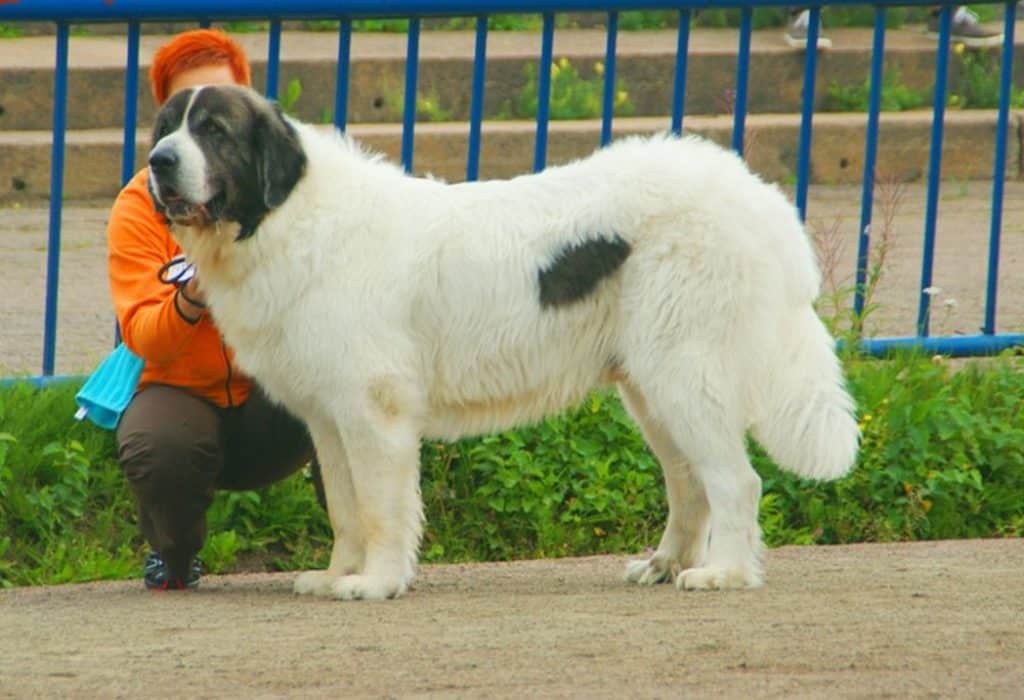
Pyrenean Mastiffs are an ancient breed hailing from the Spanish side of the Pyrenees Mountains with lineage going back thousands of years.
Their origins are not totally clear, but they were likely developed from Molloser breeds. This is a fairly rare breed that has come close to extinction in the mid-20th century.
Developed to be livestock guardians, Pyrenean Mastiffs today mostly serve as reliable guardians and all-around family dogs.
Appearance
Pyrenean Mastiffs are large, strong, and beautiful dogs, even though they’re massive, their bodies are fairly well-proportioned and they move rather gracefully for such big dogs.
The body of a Pyrenean Mastiff is covered with a heavy and long double coat designed to keep them warm in the harsh mountain environment.
The primary coat color is white with usually large brindle or patched markings. The markings can be black, beige, biscuit, gray, brown, golden.
Like all Mastiff breeds, they feature a large and long head with a black nose.
The triangular ears are medium-sized, while the hazel eyes are very small. The tail is set high, furry, and long.
Male Pyrenean Mastiffs are 29-33 inches (75-82 cm) and weigh around 178-200 pounds (81-90 kg).
Females grow to about 26-29 inches (68-74 cm) and can weigh 130-180 pounds (58-81 kg).
Temperament
Pyrenean Mastiffs are very calm and docile breeds.
They’re very friendly towards their humans and other animals and get along great with kids and other pets.
However, due to their enormous size, some supervision is needed when they’re with children.
When it comes to strangers, they’re very wary around them and will never back away in order to protect their families.
They’re very aware of their strength but will rarely use it. Only when they feel there’s a real threat to the family.
This is also a very intelligent breed and can be trained to perform various tasks.
Nevertheless, they have some stubbornness to them, which is particularly noticeable if they’re not properly trained and socialized.
Pyrenean Mastiffs are not especially active and don’t need a lot of exercise. They’re perfectly content to just lounge around the house.
Great Pyrenees vs Pyrenean Mastiff – What’s the Difference?
| Great Pyrenees | Pyrenean Mastiff |
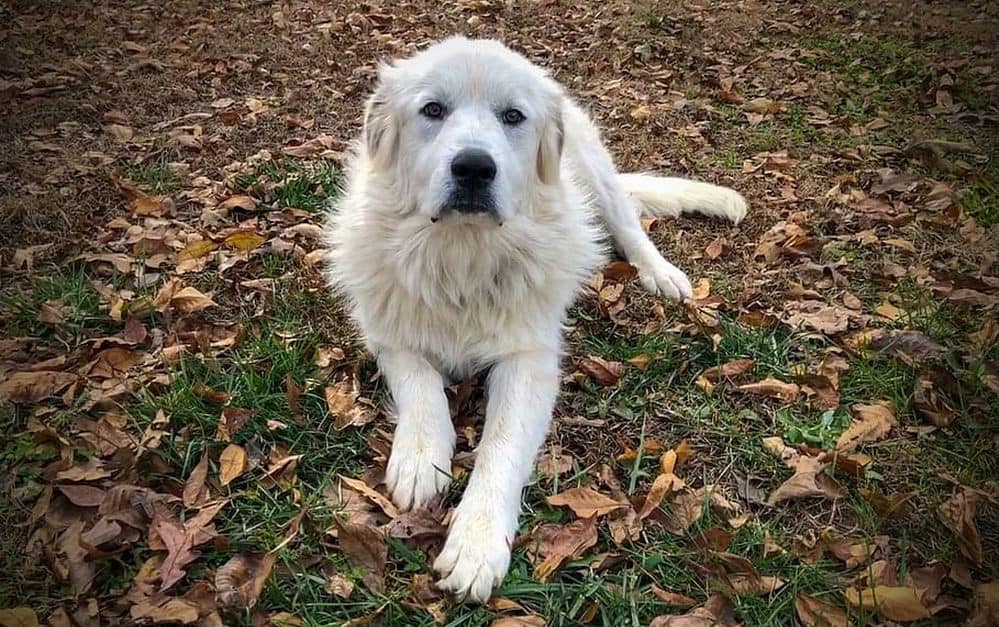 | 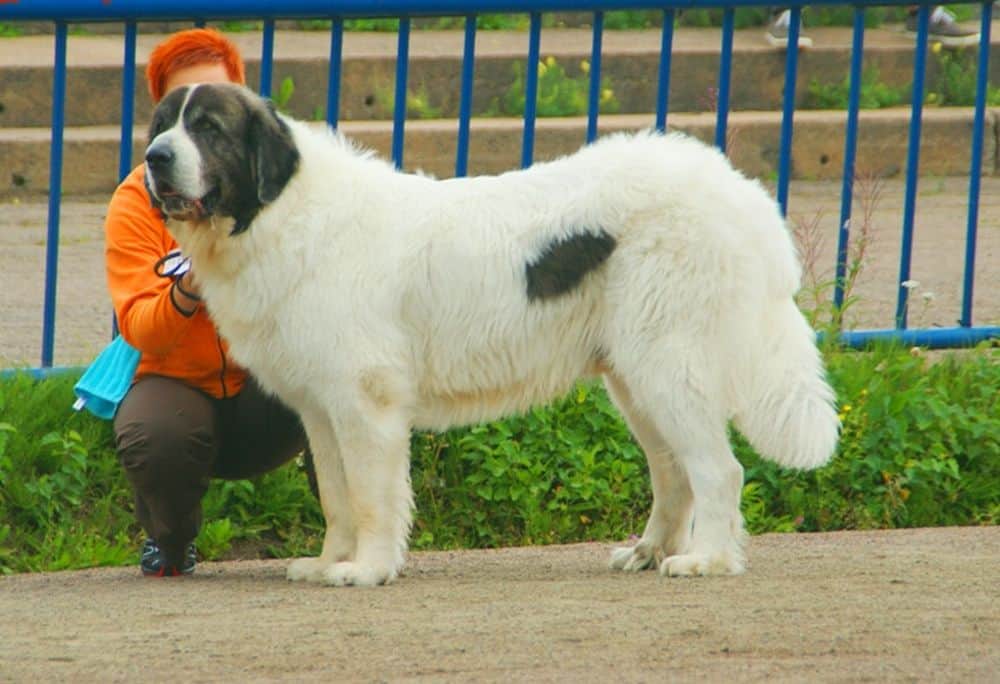 |
| Pyrenean Mastiff. by Canarian (CC BY-SA 3.0) |
As they share similar geographical origins and were bred for similar purposes, the Great Pyrenees and Pyrenean Mastiff have a lot in common.
Both breeds can be described as gentle giants, very calm and friendly, but also fiercely loyal and protective.
Still, Mastiff is the bigger of the two which is something to take into account if you have limited living space.
They also tend to drool a lot and are heavier shedders, so they’re a bit less apartment-friendly.
On the other hand, Pyrs have more tendency to bark which can be an issue in apartment buildings.
Mastiffs are also known as a bit more intelligent breed, but due to their sometimes excessive stubbornness are more difficult to train than the Pyrs.
Both breeds are great with children, but Pyrenean Mastiffs get along better with other dogs.
They’re also somewhat healthier, with fewer potential health issues and longer life expectancy.
Conclusion
If you want a big, cuddly, and loyal giant of a dog, you can hardly go wrong with either of these breeds.
They will quickly become beloved members of your family.
At the same time, without being too aggressive, both breeds are more than capable protectors of the households.
Still, these are massive dogs, and you should know what comes with a dog of that size.
Both Great Pyrs and Pyrenean Mastiffs like to spend time outside even though they’re not the most active breeds.
You’ll need plenty of space to make them feel comfortable and preferably own a yard.
If you can provide them with all they need, you’ll find a loyal and loving companion in either of these dogs.

